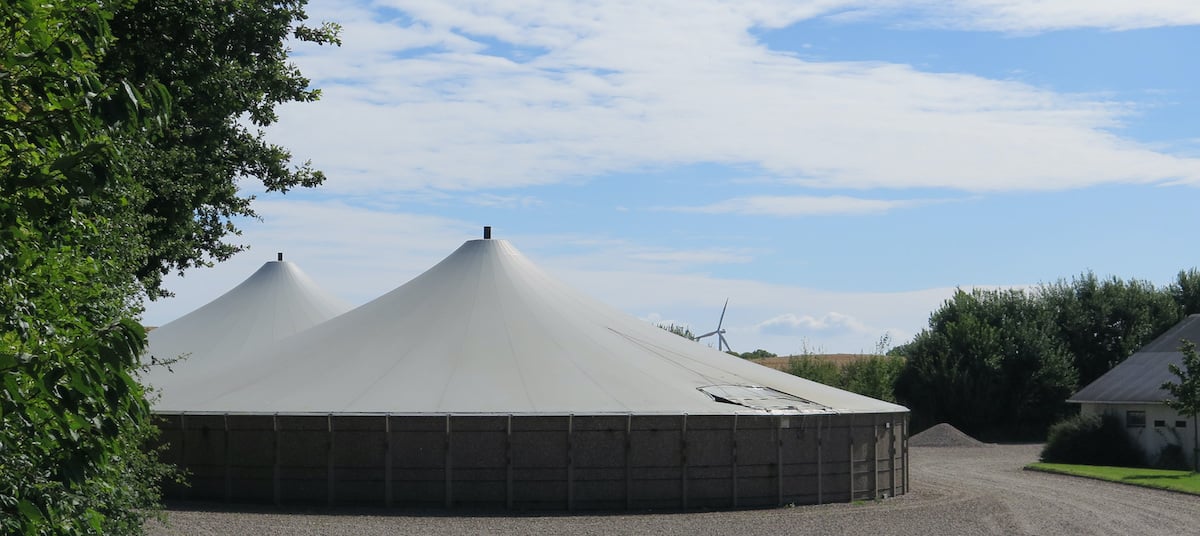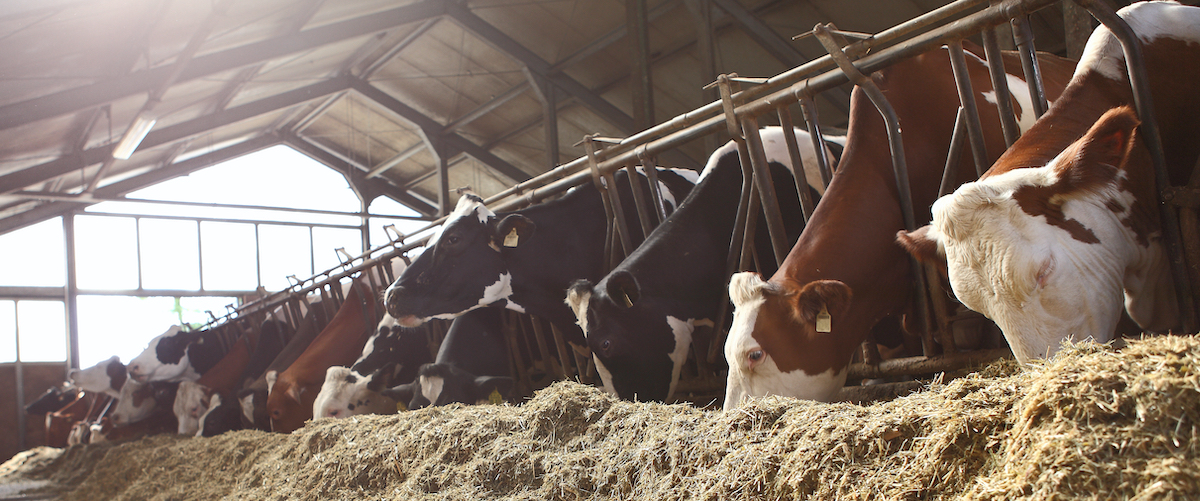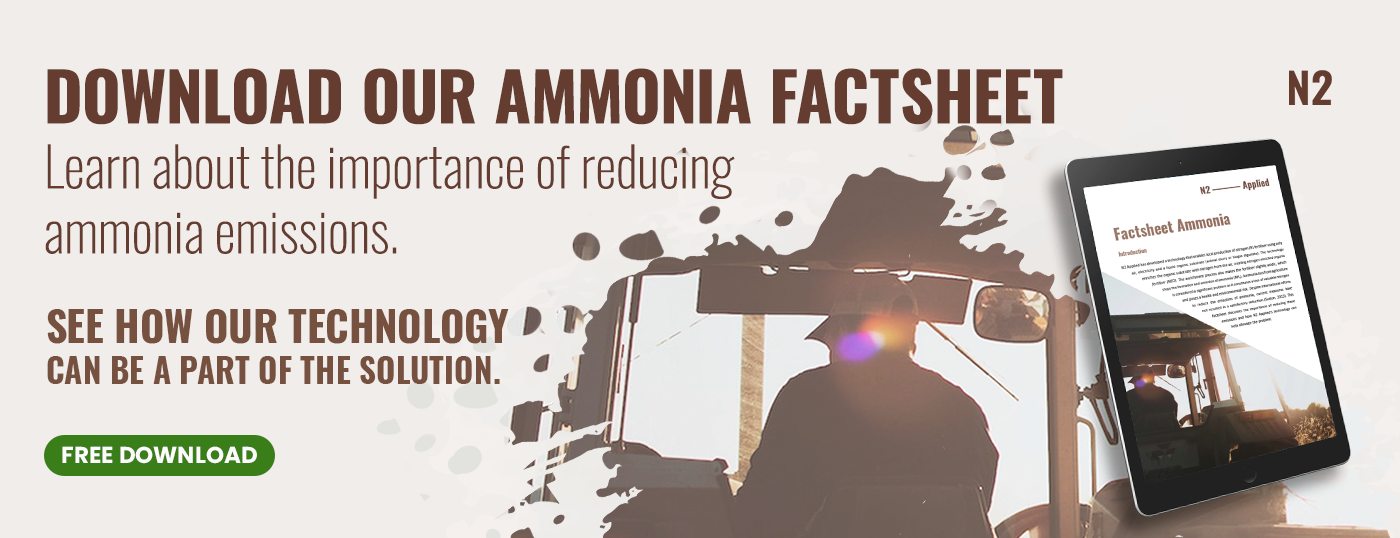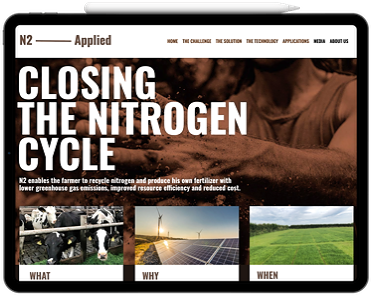Ammonia volatilisation in agriculture is basically «money going up in smoke», and one of the main pathways to losing nitrogen. The ammonia (NH3) consists of nitrogen, which is a key nutrient for plants to grow, but is volatile and easily lost. These losses turn into pollution for society, affecting human health and the environment.
Even though ammonia emissions are a global issue, as pointed out by Prof. Mark Sutton (see link at the bottom of the article), the solution is highly regional specific. Even so, reducing ammonia loss will be a win-win solution for everyone, as some solutions might also improve the business on your farm. It is important to point out that it is not only farmers who play a role, but also fertiliser companies, processing industry, retailers and consumers.
Underneath we have listed seven relevant solutions that may apply. Some solutions are easily adapted and more about awareness, planning and focus, while others require investment in equipment or are connected to future housing systems, manure managements systems and fertiliser applications. It is important to point out that the effect of the measure will vary depending on your specific situation and local conditions.
Livestock feeding
How you feed your livestock is influencing how much ammonia loss you may get, as ammonia emissions result from the degradation of urea, which result in NH4+-formation.
Less crude protein in feeding:
Reduction of crude protein (CP) in animal feed is a straightforward way to reduce the amount of nitrogen in the livestock excreta, and thereby the ammonia emissions throughout the entire manure management chain. Low-protein animal feeding also decreases in nitrous oxide (N2O) emissions which is an important climate gas. It also increases the nitrogen (N) use efficiency in animal production. Still, it is important to supply your livestock with their requirements of nutrients, so this needs to be managed well.
Livestock housing
Even though you manage to balance feeding correctly, there will be ammonia loss from the excreta from your livestock. The important principle is to reduce the time where the manure is exposed to conditions which result in ammonia losses.
Regular cleaning of floors:
By frequently cleaning the floors, the emitting surface is reduced and thereby the ammonia losses. This can be done manually or by scrapers or robot cleaning, and also result in a cleaner and better environment for the livestock.
Control the climate in the barn:
Reduced temperature and air flow in the barn can reduce ammonia emissions and also methane emissions. Automatic climate systems with roof installation or natural ventilation can support creating optimal conditions.
Increase bedding material:
Use bedding material that absorb urine to immobilize nitrogen and reduce ammonia emissions. This can also reduce nitrous oxide emissions and have positive effects on animal welfare.

Slurry handling
There are several options for manure management systems which can reduce, but also increase ammonia emissions. Paying attention to both leaching, ammonia and climate emissions when considering methods like acidification, anaerobic digester, slurry dilution or aeration is important, but unfortunately complicates things. In the end the manure will normally be applied to the field and return to the soil to fertilise soil and plants. How the manure has been stored and treated upon application effects the potential loss of ammonia, but the application method itself is of great importance. Depending on the method, climatic conditions like temperature, humidity and wind influences the losses.
Solid cover on manure storage
There are several ways to cover your storage and most of them will have a great impact on the ammonia emissions.
Slurry acidification:
This has been subject to several studies, like The Baltic Slurry Acidification project, and the reduction of pH is a well-known method to preserve the nitrogen. Acidification is done by adding acid and can be connected both to the storage system and application.
Application:
Applying nutrients at the right amount, time and form is of high importance, and appropriate fertilisation planning (including soil analysis) is necessary both for optimal growth, emissions and the economic result.
Emerging technology to reduce ammonia emissions
Adding nitrogen to slurry is an innovative approach which introduces new technology to help reduce ammonia loss. N2 Applied has developed a solution that encompasses several of the methods that reduce ammonia loss and enriches the slurry with nitrogen. This turns it into what we call NEO (Nitrogen Enriched Organic substrate). Before the enrichment, the slurry is separated into a liquid and a solid fraction. Most of the potential ammonia is connected to the liquid stream. In the process, pH is reduced by adding reactive nitrogen from the air instead of any chemical acid, and the effect remains in storage and application. This stops the ammonia loss, and as you go you also get more information about the nutrient levels in the fertiliser.
Understanding the nutrient concentrations make it easier to apply the right amount and in the right form, in turn making planning easier and more precise. Check out our video interview with Mr. Nitrogen himself; Mark Sutton, to learn more.





